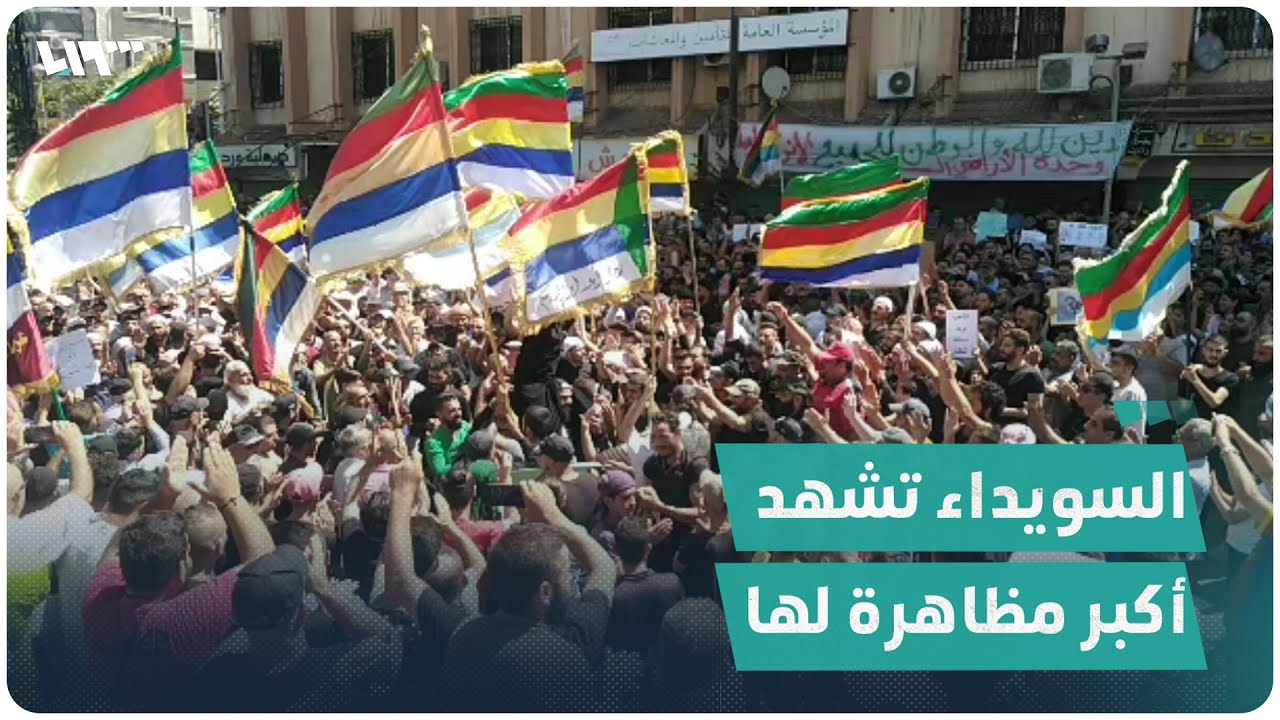By: Mohammed Rasool
Thousands of people have been taking to the streets of Sweida, in Assad-controlled southern Syria, to demand a change in government as hyperinflation takes hold.
Syrian dictator Bashar al-Assad is facing his biggest challenge for years as protests in regime-held territory grow, with demonstrators taking to the streets over the last two weeks demanding an end to authoritarian rule and crippling poverty.
The protests – sparked by widespread anger over the government’s decision to cut fuel subsidies as the country struggles with hyperinflation – began in Sweida, a Druze-majority region in the southwest of Syria, which has remained relatively calm during the 12-year-long civil war.
The demonstrations were initially ignited by frustration over soaring living costs but have now erupted into wider protests and new calls for change in the country. Hundreds have taken to the streets for 13 days straight in protests reminiscent of the start of the Arab Spring in 2011, which ultimately descended into a brutal civil war.
Protesters in Sweida shut down branches of the ruling Baath party, according to activists, and posters of Assad have been torn down. A video shared on the 23rd of August shows a poster of the dictator was set on fire in one of the main city squares – actions that can lead to imprisonment or disappearance in the regime’s notorious jails.
The demonstrations in Sweida have rippled through other cities and towns, inspiring protests and gatherings. These extended briefly even to the capital, Damascus, Latakia, Deir Azzour, Daraa, and the city of Aleppo, all under Assad’s rule. According to the reports from the UK-based Syrian Observatory for Human Rights, Syrian security forces have arrested 70 people planning “sit-in” protests since early August across the country.
Large crowds gathered in the main square in the centre of Sweida on Friday, and shops remained closed as the residents continued to call for strikes until their demands are met.
Assad, who looked as though he could have been toppled in the first few years of the war, managed to stay in power and regain control over almost all of the country with the help of Russia, Iran and Hezbollah.
The government in Damascus has tried to downplay the recent protests, including meeting the Druze religious leadership and blaming poor living conditions and low salaries on Western sanctions, but the demonstrations show no sign of slowing down. They follow similar bursts of public anger in Sweida in 2020.
The UN estimates that 90 percent of Syrians live in poverty, and the recent spike in fuel prices has made the situation worse.
The protesters are calling for the imposition of a $100 minimum wage for public sector workers – many are on as little as $20 per month – which has been exacerbated by the drastic drop in Syrian currency. Reports say that some people in Damascus have resorted to carrying cash around in backpacks rather than wallets to be able to fit all the banknotes they need to make basic purchases.
The demands for better living conditions and dignity have resonated with many across the war-weary country who dreamed of a better future back in 2011.
Assad has tried to depict himself as the only legitimate solution for Syria, and recently he has been able to slowly normalise ties again with neighbouring countries. But on Friday, protesters continued to chant: “Step down Bashar, we want to live in dignity.”
VICE

Leave a Reply
You must be logged in to post a comment.